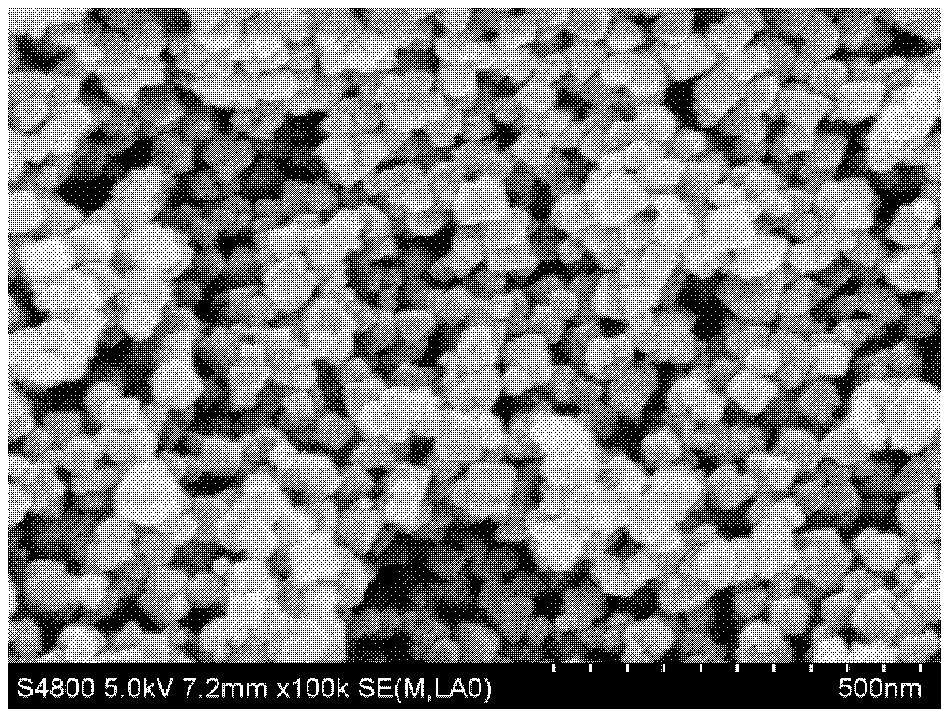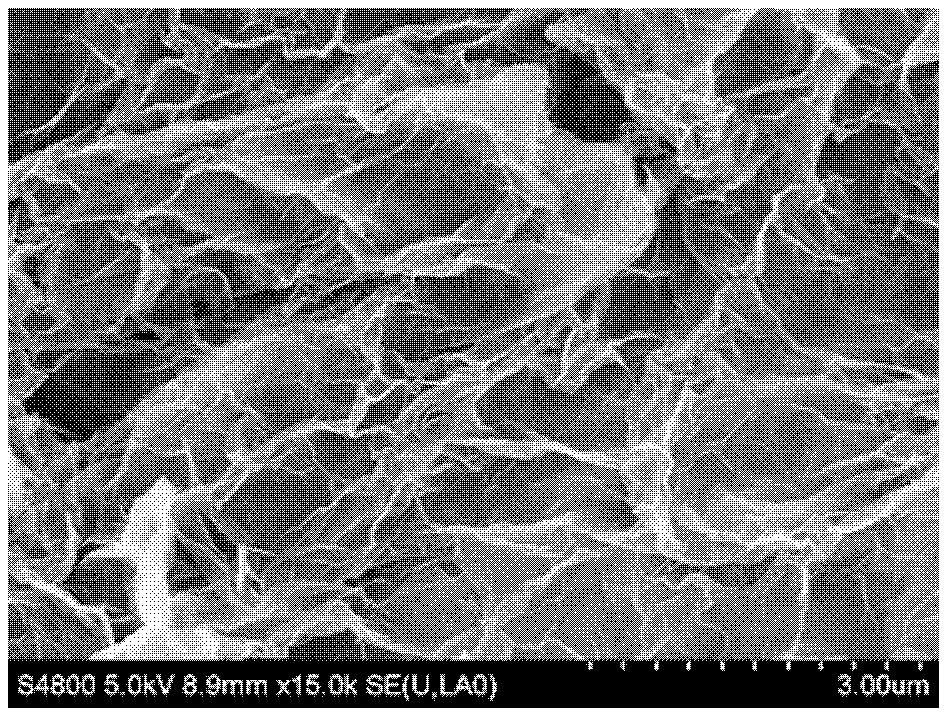Adsorption-photocatalysis composite material synthesized on basis of in-situ synchronous assembly of UIO-66-NH2 and graphene
A UIO-66-NH2, composite material technology, applied in the field of adsorption-photocatalytic composite materials, can solve the problems of few reports, poor stability and difficult process of MOF photocatalysts, and achieve strong controllability of reaction conditions and high thermal stability. , the effect of increasing dispersion
- Summary
- Abstract
- Description
- Claims
- Application Information
AI Technical Summary
Problems solved by technology
Method used
Image
Examples
Embodiment 1
[0030] Dissolve graphene of different qualities in N,N-dimethylformamide prepared in advance, and ultrasonicate it for 30 minutes to dissolve graphene in the solution to obtain solution A; then weigh a certain amount of 2-amino-p- Dissolve phthalic acid in solution A, sonicate for 10 minutes, stir for 5 minutes to obtain solution B; then weigh a certain amount of zirconium tetrachloride, the precursor used in the synthesis of MOF, dissolve it in solution B, sonicate for 10 minutes, and stir for 5 minutes to obtain solution C ; Solution C was placed in the microwave to react at 120°C, and the microwave was heated at 10°C / min, and the reaction was 40min. After the end, the product UIO-66-NH was obtained 2 -GR. The product obtained above was centrifuged and washed to obtain UIO-66-NH 2 -Composite material of GR. Accompanying drawing 1 has provided the UIO-66-NH that example 1 gains in this case 2 , GR and UIO-66-NH 2 - FESEM map of GR. Attached Figure 2 shows the case UIO-66...
Embodiment 2
[0032] Repeat the operation steps of Example 1, the difference is that during the microwave reaction, the temperature is raised for 10 minutes, and the reaction is 30 minutes. The result is similar to Example 1, and UIO-66-NH is relatively uniformly dispersed on the graphene 2 . The microstructure of the sample is consistent with that of Example 1, the crystallinity is consistent with that of Example 1, and the diffuse reflectance results show that the composite material sample has a visible light response.
Embodiment 3
[0034] Repeat the operation steps of Example 1, the difference is that during the microwave reaction, the temperature is raised for 10 minutes, and the reaction is 35 minutes. The result is similar to that of Example 1. UIO-66-NH is more uniformly dispersed on the graphene 2 . The microstructure of the sample is consistent with that of Example 1, the crystallinity is consistent with that of Example 1, and the diffuse reflectance results show that the composite material sample has a visible light response.
PUM
 Login to View More
Login to View More Abstract
Description
Claims
Application Information
 Login to View More
Login to View More - R&D
- Intellectual Property
- Life Sciences
- Materials
- Tech Scout
- Unparalleled Data Quality
- Higher Quality Content
- 60% Fewer Hallucinations
Browse by: Latest US Patents, China's latest patents, Technical Efficacy Thesaurus, Application Domain, Technology Topic, Popular Technical Reports.
© 2025 PatSnap. All rights reserved.Legal|Privacy policy|Modern Slavery Act Transparency Statement|Sitemap|About US| Contact US: help@patsnap.com



